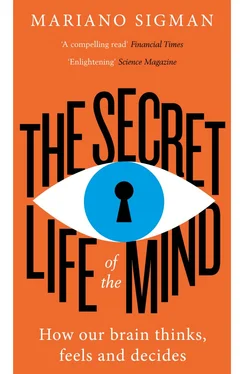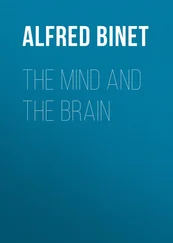So different social experiences result in completely distinct brains. A caress, a word, an image – every life experience leaves a trace in the brain. These traces modify the brain and, with it, one’s way of responding to things, one’s predisposition to relating to someone, one’s desires, wishes and dreams. In other words, the social context changes the brain, and this in turn defines who we are as social beings.
A second unfounded intuition is thinking that because something is biological it is unchangeable. Again, this is simply not true. For instance, the predisposition to music depends on the biological constitution of the auditory cortex. This is a causal relation between an organ and a cultural expression. However, this connection does not imply developmental determinism. The auditory cortex is not static, anyone can change it just by practising and exercising.
Thus the social and the biological are intrinsically related in a network of networks. This categorical division is not a property of nature, but rather of our obtuse way of understanding it.
CHAPTER TWO
The fuzzy borders of identity
What defines our choices and allows us to trust other people and our own decisions?
Our choices define us. We choose to take risks or live conservatively, to lie when it seems convenient or to make the truth a priority, no matter what the cost. We choose to save up for a distant future or live in the moment. The vast sum of our actions comprises the outline of our identities. As José Saramago put it in his novel All the Names : ‘We don’t actually make decisions, the decisions make us.’ Or, in a more contemporary version, when Albus Dumbledore lectures Harry Potter: ‘It is our choices, Harry, that show what we truly are, far more than our abilities.’
Almost all decisions are mundane, because the overwhelming majority of our lives are spent in the day-to-day. Deciding whether we’ll visit a friend after work, if we should take the bus or the Underground; choosing between chips or a salad. Imperceptibly, we compare the universe of possible options on a mental scale, and after thinking it over we finally choose (chips, of course). When choosing between these alternatives, we activate the brain circuits that make up our mental decision-making machine.
Our decisions are almost always made based on incomplete information and imprecise data. When a parent chooses what school to send their child to, or a Minister of Economics decides to change the tax policy, or a football player opts to shoot at goal instead of passing to a teammate in the penalty area – in each and every one of these occasions it is only possible to sketch an approximate idea of the impending consequences of our decisions. Making decisions is a bit like predicting the future, and as such is inevitably imprecise. Eppur si muove . The machine works. That is what’s most extraordinary.
Churchill, Turing and his labryinth
On 14 November 1940, some 500 Luftwaffe planes flew, almost unchallenged, to Britain and bombed the industrial city of Coventry for seven hours. Many years after the war had ended, Captain Frederick William Winterbotham revealed that Winston Churchill fn1could have avoided the bombing and the destruction of the city if he had decided to use a secret weapon discovered by the young British mathematician Alan Turing.
Turing had achieved a scientific feat that gave the Allies a strategic advantage that could decide the outcome of the Second World War. He had created an algorithm capable of deciphering Enigma, the sophisticated mechanical system made of circular pieces – like a combination lock – that allowed the Nazis to encode their military messages. Winterbotham explained that, with Enigma decoded, the secret service men had received the coordinates for the bombing of Coventry with enough warning to take preventive measures. Then, in the hours leading up to the bombing, Churchill had to decide between two options: one emotional and immediate – avoiding the horror of a civilian massacre – and the other rational and calculated – sacrificing Coventry, not revealing their discovery to the Nazis, and holding on to that card in order to use it in the future. Churchill decided, at a cost of 500 civilian lives, to keep Britain’s strategic advantage over his German enemies a secret.
Turing’s algorithm evaluated in unison all the configurations – each one corresponding to a possible code – and, according to its capacity to predict a series of likely messages, updated each configuration’s probability. This procedure continued until the likelihood of one of the configurations reached a sufficiently high level. The discovery, in addition to precipitating the Allied victory, opened up a new window for science. Half a century after the war’s end it was discovered that the algorithm that Turing had come up with to decode Enigma was the same one that the human brain uses to make decisions. The great English mathematician, who was one of the founders of computation and artificial intelligence, created – in the urgency of wartime – the first, and still the most effective, model for understanding what happens in our brains when we make a decision.
As in the procedure sketched out by Turing, the cerebral mechanism for making decisions is built on an extremely simple principle: the brain elaborates a landscape of options and starts a winner-take-all race between them.
The brain converts the information it has gathered from the senses into votes for one option or the other. The votes pile up in the form of ionic currents accumulated in a neuron until they reach a threshold where the brain deems there is sufficient evidence. These circuits that coordinate decision-making in the brain were discovered by a group of researchers headed by William Newsome and Michael Shadlen. Their challenge was to design an experiment simple enough to be able to isolate each element of the decision and, at the same time, sophisticated enough to represent decision-making in real life.
This is how the experiment works: a cloud of dots moves on a screen. Many of the dots move in a chaotic, disorganized way. Others move coherently, in a single direction. A player (an adult, a child, a monkey and, sometimes, a computer) decides which way that cloud of dots is moving. It is the electronic version of a sailor lifting a finger to decide, in the midst of choppy waters, which way the wind is blowing. Naturally, the game becomes easier when more dots are moving in the same direction.
Monkeys played this game thousands of times, while the researchers recorded their neuronal activity as reflected by the electrical currents produced in their brains. After studying this exercise for many years, and in many variations, they revealed the three principles of Turing’s algorithm for decision-making:
(1) A group of neurons in the visual cortex receives information from the retina. The neuron’s current reflects the quantity and direction of movement in each moment, but does not accumulate a history of these observations.
(2) The sensory neurons are connected to other neurons in the parietal cortex, which amass this information over time. So the neuronal circuits of the parietal cortex codify how the predisposition towards each possible action changes over time during the course of making the decision.
(3) As information favouring one option accumulates, the parietal cortex that codifies this option increases its electrical activity. When the activity reaches a certain threshold, a circuit of neurons in structures deep in the brain – known as basal ganglia – set off the corresponding action and restart the process to make way for the next decision.
The best way to prove that the brain decides through a race in the parietal cortex is by showing that a monkey’s response can be conditioned by injecting a current into the neurons that codify evidence in favour of a certain option. Shalden and Newsome did that experiment. While one monkey was watching a cloud of dots that moved completely randomly, they used an electrode to inject an electrical current into the parietal neurons that codify movement to the right. And, despite the senses indicating that movement was tied in either direction, the monkeys always responded that they were moving to the right. This is like emulating electoral fraud, manually inserting certain votes into the ballot box.
Читать дальше












